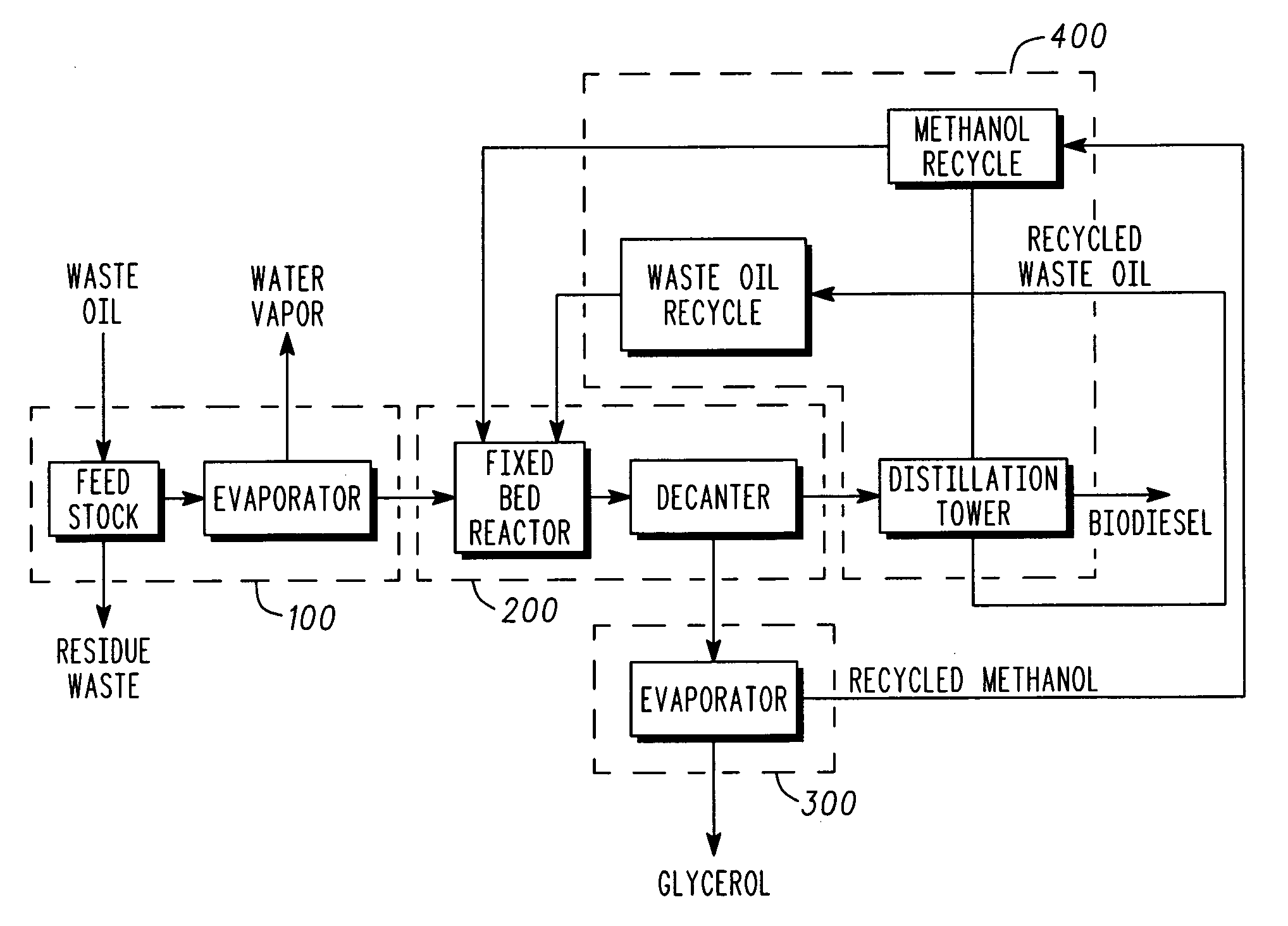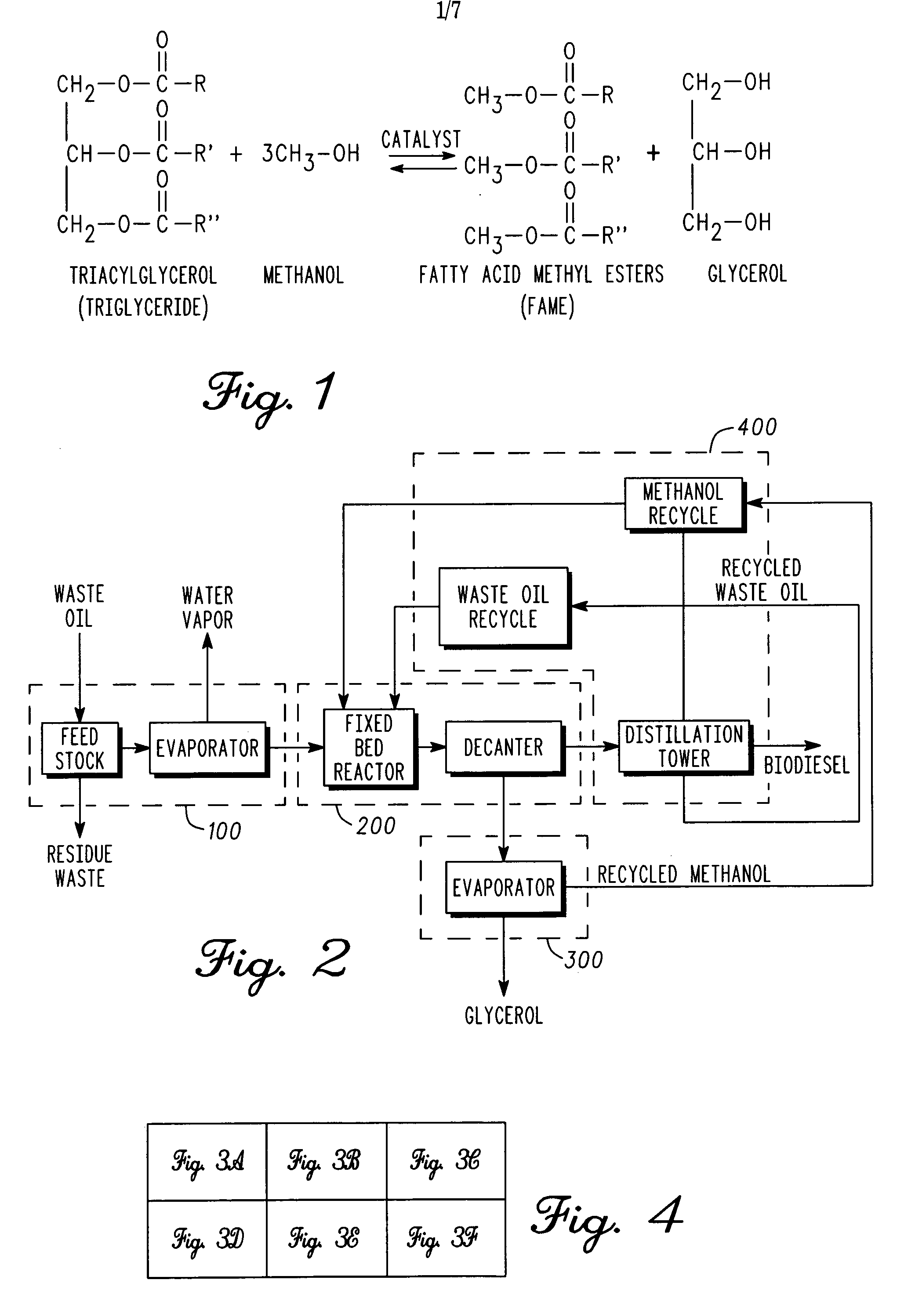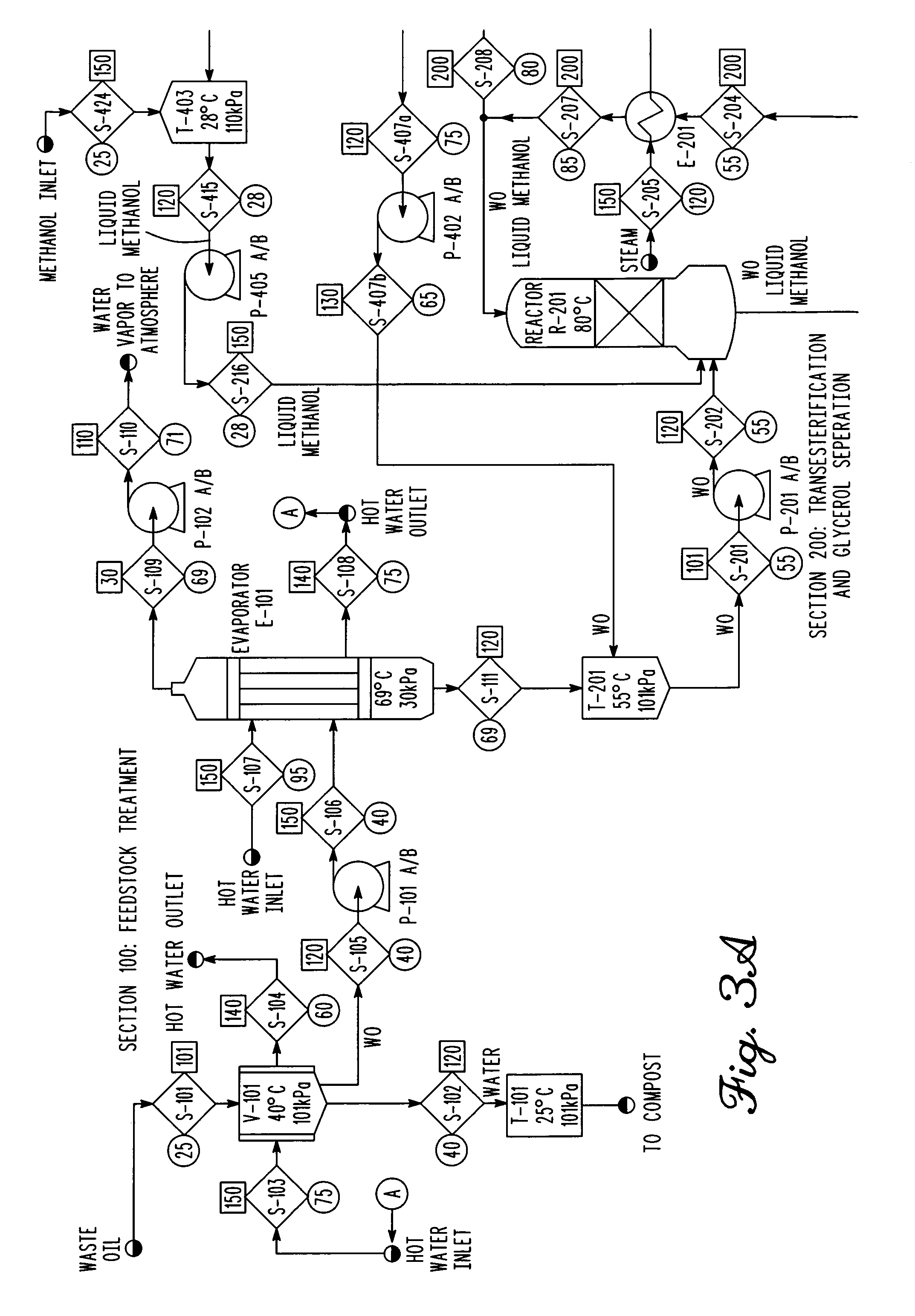System and process of biodiesel production
a biodiesel and process technology, applied in the direction of liquid carbonaceous fuels, liquid gas reaction of thin film type, fatty acid esterification, etc., can solve the problems of reducing the efficiency of catalyst, yellow and brown grease, and the most troublesome waste oil products, so as to achieve minimal negative impact on the environment and optimize the overall efficiency of the process
- Summary
- Abstract
- Description
- Claims
- Application Information
AI Technical Summary
Benefits of technology
Problems solved by technology
Method used
Image
Examples
Embodiment Construction
[0029]The following description and examples illustrate a preferred embodiment of the present invention in detail. Those skilled in the art will recognize that there are numerous variations and modifications of this invention that are encompassed by its scope. Accordingly, the description of a preferred embodiment should not be deemed to limit the scope of the present invention.
[0030]The preferred apparatus and method of biodiesel production from waste oil obtained from a mixture of un-known composition which includes oils, grease, triglycerides, protein or other matter in some organic form containing sufficient fatty acids to be converted into biodiesel in the presence of a sugar catalyst, for example yellow or brown grease, is disclosed as follows. Although the description presented herein specifically is written with reference to ‘waste oil’, this term is used to include and generally describe any mixture of un-known composition having the characteristics previously mentioned. Th...
PUM
| Property | Measurement | Unit |
|---|---|---|
| Fraction | aaaaa | aaaaa |
| Percent by mole | aaaaa | aaaaa |
| Temperature | aaaaa | aaaaa |
Abstract
Description
Claims
Application Information
 Login to View More
Login to View More - R&D
- Intellectual Property
- Life Sciences
- Materials
- Tech Scout
- Unparalleled Data Quality
- Higher Quality Content
- 60% Fewer Hallucinations
Browse by: Latest US Patents, China's latest patents, Technical Efficacy Thesaurus, Application Domain, Technology Topic, Popular Technical Reports.
© 2025 PatSnap. All rights reserved.Legal|Privacy policy|Modern Slavery Act Transparency Statement|Sitemap|About US| Contact US: help@patsnap.com



